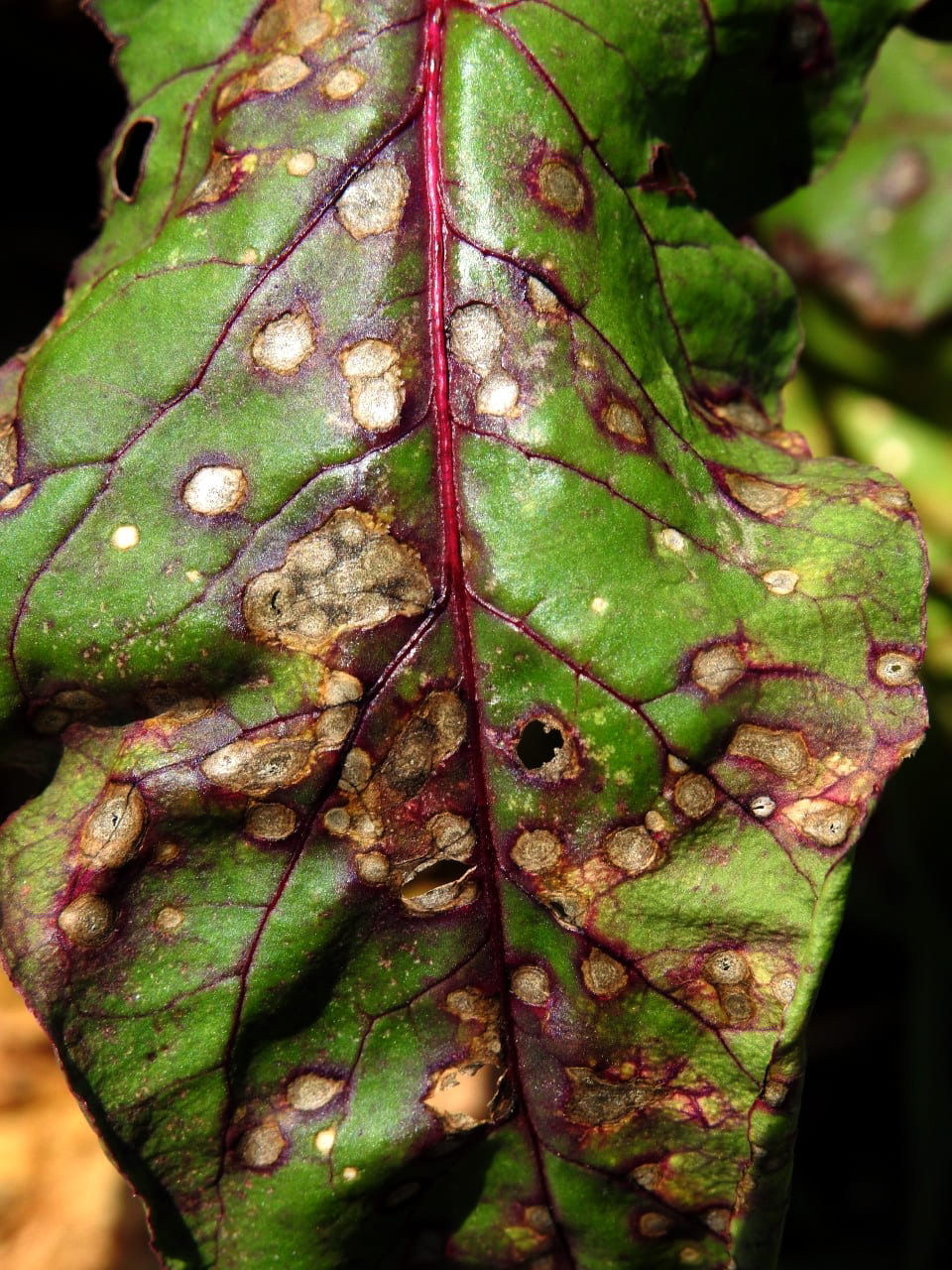
Chard Pox
Cercospora Beticola
Pathogen:
Fungus
Type:
Risk:
HIGH





DESCRIPTION
Pathogen description
Cercospora beticola is a phytopathogenic fungus that causes the disease known as leaf spot of beet or chard. This pathogen is especially harmful to sugar beet crops, as well as other plants in the chenopodiaceae family, such as chard. It is characterized by its ability to survive in crop residues and infected seeds, as well as its rapid dispersal through spores transported by wind and water.
Disease description
The disease caused by Cercospora beticola in chard manifests itself as circular or angular Taches on the leaves, which are initially light brown and then turn white to gray with a reddish edge. As the disease progresses, these Taches can merge, causing wilting and necrosis of the leaves, significantly affecting yield and crop quality.

TEMPERATURE AND HUMIDITY
20ºC - 25ºC
80% - 95%

VOIES DE TRANSMISSION
Infected plants, the spread of spores by wind, contaminated irrigation water, the use of infected seeds and the activity of insect vectors.

Chemical treatments
CONTROL
• AZOXISTROBIN 25% [SC] P/V
• CUPRIC HYDROXIDE 13.6% (EXPR. IN CU) + COPPER OXYCHLORIDE 13.6% (EXPR. IN CU) [SC] P/V
Treatments authorized in organic farming
• CUPRIC HYDROXIDE 13.6% (EXPR. IN CU) + COPPER OXYCHLORIDE 13.6% (EXPR. IN CU) [SC] P/V
Biological control
• BACILLUS SUBTILIS (STRAIN QST 713) 1.34% [SC] P/V
Preventive treatments
• AZOXISTROBIN 25% [SC] P/V
• CUPRIC HYDROXIDE 13.6% (EXPR. IN CU) + COPPER OXYCHLORIDE 13.6% (EXPR. IN CU) [SC] P/V
• BACILLUS SUBTILIS (STRAIN QST 713) 1.34% [SC] P/V
To prevent and control leaf spot caused by Cercospora beticola, it is essential to implement integrated pest management practices. This includes rotating crops to reduce spore buildup in the soil, removing infected crop residue, using resistant varieties where possible, and controlling weeds to improve air circulation and reduce humidity. In addition, the use of specific fungicides can be effective in controlling the disease, although they must be applied preventively and following the dosage recommendations to avoid pathogen resistance.
Recommendations
*The recommended treatments are recommendations based on the authorities' databases and do not replace in any way the guidelines established by the legislation of each country.





